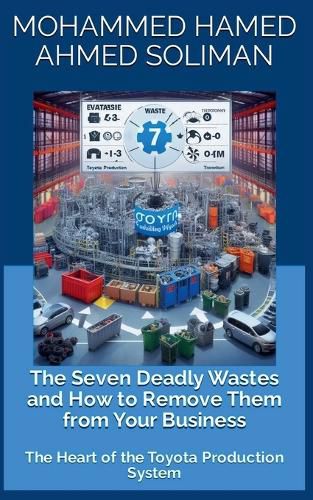Readings Newsletter
Become a Readings Member to make your shopping experience even easier.
Sign in or sign up for free!
You’re not far away from qualifying for FREE standard shipping within Australia
You’ve qualified for FREE standard shipping within Australia
The cart is loading…






This title is printed to order. This book may have been self-published. If so, we cannot guarantee the quality of the content. In the main most books will have gone through the editing process however some may not. We therefore suggest that you be aware of this before ordering this book. If in doubt check either the author or publisher’s details as we are unable to accept any returns unless they are faulty. Please contact us if you have any questions.
Waste is anything that uses resources but offers the customer nothing in return. Most activities are waste, or "muda," and can be divided into two categories. Although type one muda does not provide value, it is inescapable given the production assets and technologies available today. An illustration would be checking welds for safety, that type we also call necessary non value-added activity. Type two muda does not add value and can be quickly eliminated. An illustration is a process in a process village with disconnected phases that may be swiftly converted into a cell where unnecessary material moves and inventory are no longer necessary. A very small portion of all value-stream activities truly generate value as perceived by the client. The most effective way to boost business performance is to stop doing the numerous unnecessary things.
In order to cut costs during the economic downturn, many businesses are implementing abstinence policies. This could mean laying off workers and cutting some wages. In fact, those actions might only work for a short time.Unless the company implements a culture of continuous improvement and alters its method of operation, the situation may recur and become even worse. This brings us back to the purpose for which the Toyota production system was developed.
$9.00 standard shipping within Australia
FREE standard shipping within Australia for orders over $100.00
Express & International shipping calculated at checkout
Stock availability can be subject to change without notice. We recommend calling the shop or contacting our online team to check availability of low stock items. Please see our Shopping Online page for more details.
This title is printed to order. This book may have been self-published. If so, we cannot guarantee the quality of the content. In the main most books will have gone through the editing process however some may not. We therefore suggest that you be aware of this before ordering this book. If in doubt check either the author or publisher’s details as we are unable to accept any returns unless they are faulty. Please contact us if you have any questions.
Waste is anything that uses resources but offers the customer nothing in return. Most activities are waste, or "muda," and can be divided into two categories. Although type one muda does not provide value, it is inescapable given the production assets and technologies available today. An illustration would be checking welds for safety, that type we also call necessary non value-added activity. Type two muda does not add value and can be quickly eliminated. An illustration is a process in a process village with disconnected phases that may be swiftly converted into a cell where unnecessary material moves and inventory are no longer necessary. A very small portion of all value-stream activities truly generate value as perceived by the client. The most effective way to boost business performance is to stop doing the numerous unnecessary things.
In order to cut costs during the economic downturn, many businesses are implementing abstinence policies. This could mean laying off workers and cutting some wages. In fact, those actions might only work for a short time.Unless the company implements a culture of continuous improvement and alters its method of operation, the situation may recur and become even worse. This brings us back to the purpose for which the Toyota production system was developed.